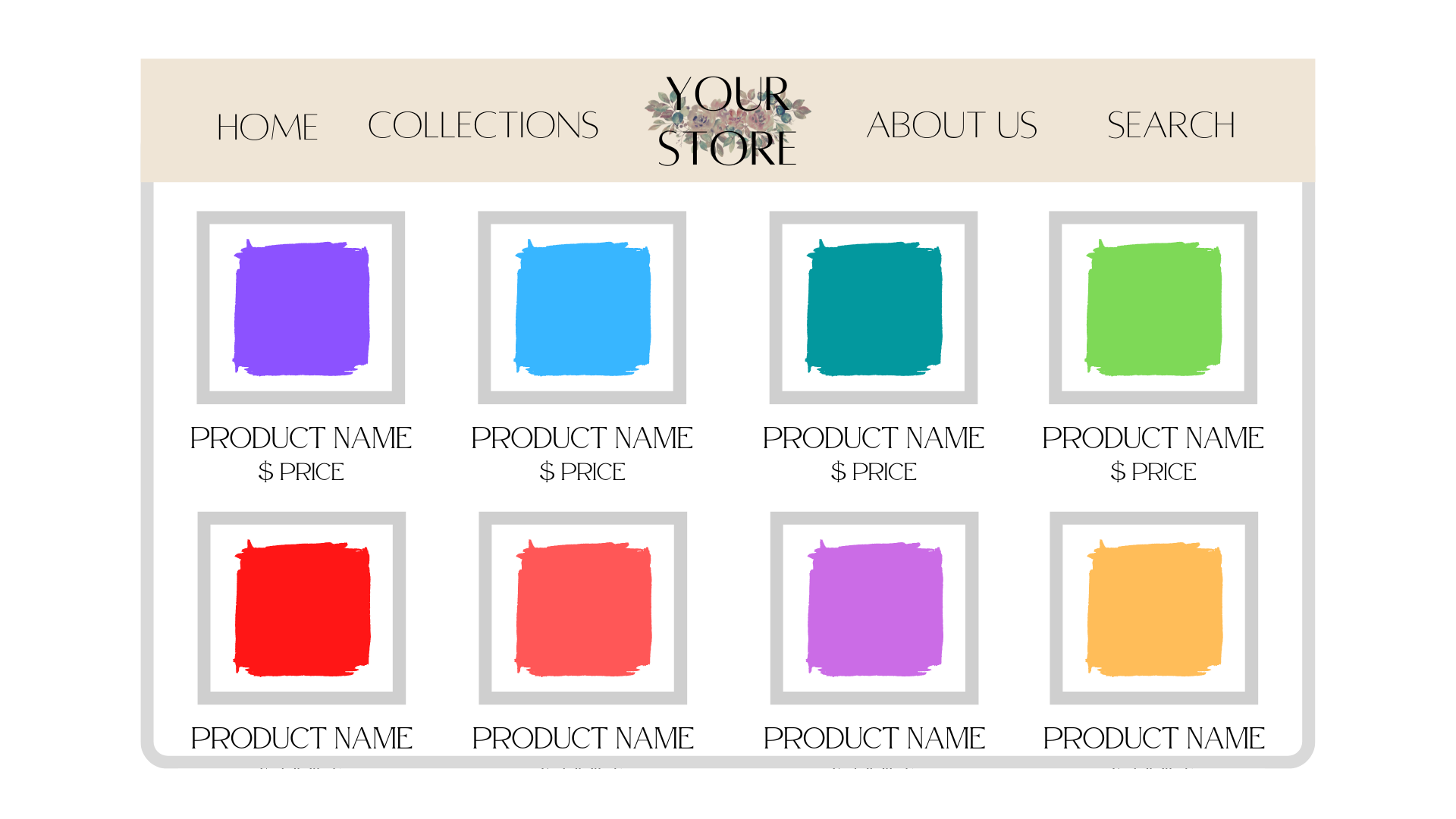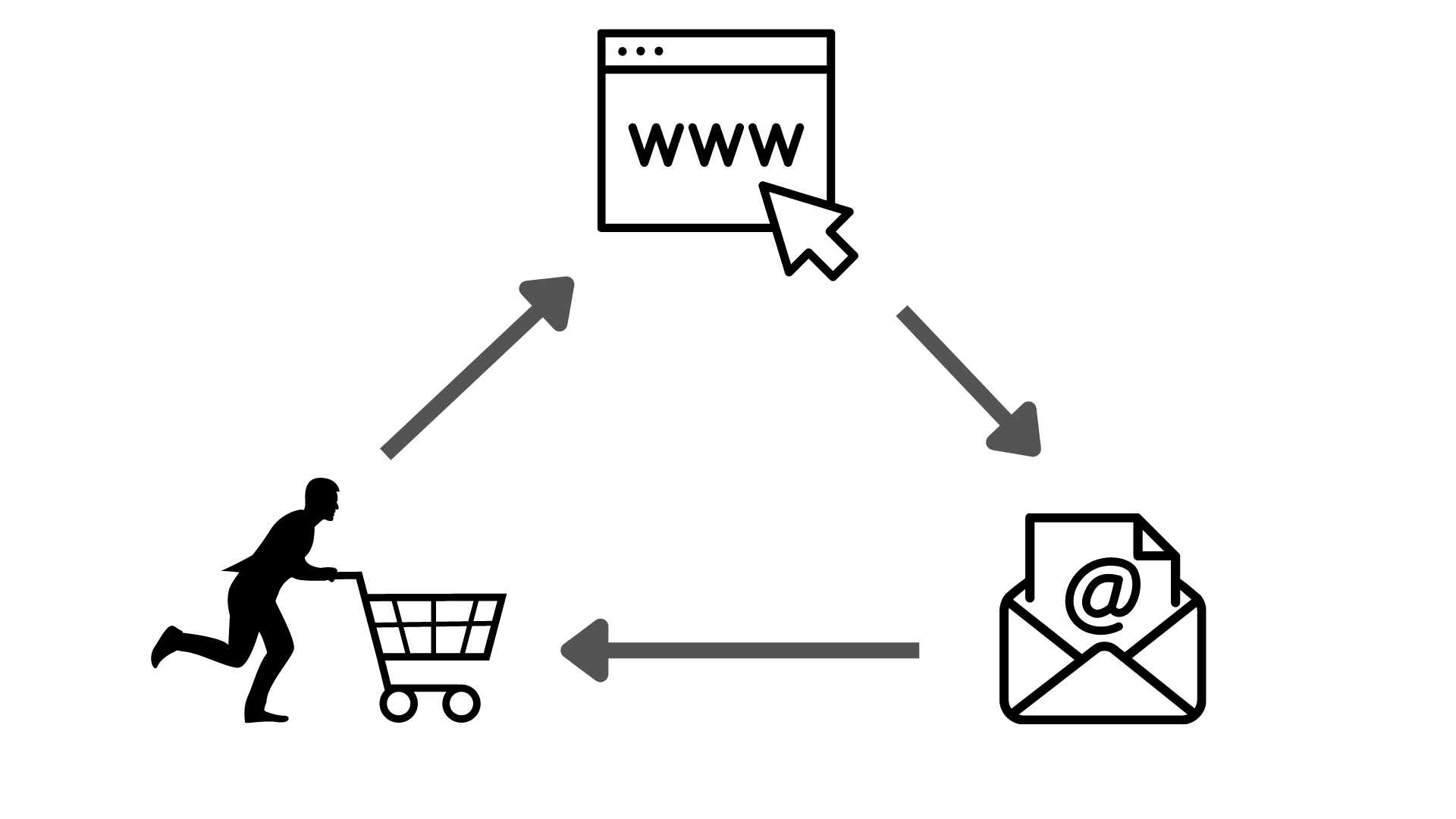How to Boost Sales on Your Online Store
1. Think and Improve From Your Customers’ Perspective
One thing that business and store owners sometimes forget to do is to look at their operation through their customers’ perspective. Doing so can be powerful when done correctly, because store owners can gain insight into such aspects as what customers enjoy and ignore the most in the store, or how changes to the store could benefit both customers and the store, which will naturally drive more success toward what you and your store have to offer.
For example, store owners could aim to have a deep and well-developed understanding of their target audience by looking at analytics to learn how your customers find and use your store, and by considering what unique offerings your store has that best draws in customers. Imagine you’re an online store selling specialized camera equipment, and using analytics and sales data, you figure out that a particular camera tripod sells very well and is often the product that your site visitors search up before finding and arriving on your site. This lets you know that that particular camera tripod is very popular and is why many visitors end up on your site. You can also identify the unique highlight of your store that brings in a lot of your site traffic, being the specific camera tripod, which can help guide your future decisions of how you want to run your shop, such as highlighting the camera tripod on your site’s landing page to entice visitors who are on your site for it, or aiming to improve your search result rankings to attract more traffic to your site for your products.
2. Simplify User Experiences
Nobody likes a clunky, awkward, unresponsive experience when shopping; everyone is looking for a shopping experience that is enjoyable, relatively quick, and lets them have what they want when they want it. This is why it’s important for you to ensure that your store’s user experience is on the simplistic and streamlined side of things.
Make the process for people to find the products they want as simple as possible. Make sure your store navigation is clear and not ambiguous, such as if you were to split products into categories that don’t make sense for your site and customer base, or if your site’s layout is inconvenient to navigate and look for products in. Make the checking out process simple, with either multiple pages or a progressively expanding page that separate all the information fields that customers need to enter with their purchases; a simple checkout process can help dissuade abandoned carts as well. Keep writing short and concise, and use clearly identifiable buttons and icons, such as shopping carts or magnifying glasses. Customers more often than not want to start and be done with their online shopping experience quickly, with the average online purchase made in around 2 minutes, so design your site experience to appeal to this mindset.
3. Reach Out and Follow Up with Customers
Create a closer and more personalized relationship with customers, and they’ll be more inclined to engage with your store, providing you and your business with organic growth that has the potential to be very long-lasting. Using platforms like social media, or through email newsletters and updates that you occasionally send out, you can create more opportunities to engage with customers and interest them in your store, whether they’ll be first time or returning customers. When your communication with customers, whether it’s through email or on social media, is pleasant, on a regular schedule, yet not overbearing, it can reach far and wide to inspire potential customer interest in what you have to offer. These will foster a positive impression of you and your business in customers’ minds, which will lend itself to more motivation in customers to make purchases from and return to your store both in the short term and long term.
For example, let’s say a customer that has purchased from your store a month ago has since forgotten about your store due to their being busy with school, but still has an interest in the sorts of products that your store offers. Then, they happen to receive an email newsletter from you detailing the newest products you have available. This reminds them of your store’s offerings, along with the products they purchased from your store before, and interests them enough for them to return to your site to browse and then purchase your newest products. This example demonstrates the potential that communication with customers at acceptable and welcome levels has in boosting your online store’s sales.
4. Mobile Accessibility and Positive Customer Service
When you cater to creating pleasant experiences for customers on your site, it’s not surprising that they’ll be more inclined to complete transactions with your store. This is why it’s important to keep 2 particular needs in mind: first, the need for a mobile-friendly browsing experience, and second, a responsive business and point of contact for customers.
In 2022, 58.99% of website traffic worldwide originates from mobile devices. This means that to accommodate the majority of online visitors to your site, you’ll want to make sure that your site is mobile-friendly and optimized to function regardless of what device is being used to access it. Many site builders offer built-in features that let you, in one way or another, create a functioning mobile version of your originally desktop-oriented site. If seamless desktop version and mobile version editing is something you’re looking for, I’d recommend you create your website using Website.com. Alongside offering the convenience of editing the desktop and mobile version of a site in the same browser session that switches with just the press of a button, the Website.com Site Builder’s actual site building process is extremely easy to use with its drag-and-drop element editing, and they offer a high degree of customizability to your site that still results in professional-looking final products. If you’d like to create a site that accommodates desktop and mobile visitors equally, I’d recommend you use this site builder.
89% of consumers are likely to return to a store to make another purchase after a positive customer service experience, and 93% of consumers are likely to make repeat purchases with stores that offer excellent customer service. Customers value responsive reply times and having their questions/concerns addressed by the entity that they’re coming into contact with. Give them easy and responsive ways to contact you, such as if you give your customers an email address that they can contact you at and expect a response from within the next 3-5 business days. For example, set up a Facebook Messenger, WhatsApp, and Instagram that’s open to DMs (direct messages) for customers to reach out to you at. Many customers of online stores take issue with unresponsive businesses when they have genuine questions and needs that they want to have answered. Don’t make the mistake of losing customers due to their needs not quite being met, when they easily could be!
5. Build Organic Credibility with Customers
Consumers, more often than not, want to find businesses and stores that they can trust when completing purchases and interactions with them. This is why it’s important to build your store’s credibility, so that customers can have more trust in what you have to offer. How can you do this? There’s a number of ways through which you can establish your business as a legitimate and dependable place to shop.
The bread and butter of building credibility for your site is to make strong first impressions of being a high quality, put-together website that attentive care was used in the creation process of. This means using writing that’s well written with no grammar issues, spelling mistake, or any other language mistakes that would put off potential customers looking for a professional shopping experience. High quality websites also use high quality product images and site graphics of their own creation, ownership, and/or arrangement, and stay away from using things like generic stock images or royalty free graphics as much as possible. Alternatives to using high quality photos that you’ve had taken specifically for your products, for example, such as using generic stock images, or not even having images of your products at all, greatly take away from the credibility of your operations as a whole. Potential customers might be put off by not knowing exactly what the product will look like until they receive; as well, products sold using only stock photos or with no photos at all is a practice that customers can identify as belonging to online scam operations, so you don’t want to off-put your customers by presenting your site like how scams do.
An effective way to build organic credibility with your site visitors is to display honest reviews of your site from previous customers. Yes, this may mean displaying some subpar, or even flat out bad, reviews that you receive, but this transparency will appeal to clients who can recognize that your high quality products and shopping experience far outweigh the negativity that any business faces. Customers see the presence of previous reviews as a good thing, since that can prove that purchases have been made with this store and that this store doesn’t scam its customers. Potential customers will be able to appreciate the honesty and transparency with which you display your site’s products, and feel reassured in spending their money with your business and trusting you to follow through with what you’re offering.
Implementing SSL encryption, which makes the connection between your store and customers’ devices secure, is another way you can build organic trust in your site within your site visitors and customers. Websites that use SSL for their connections are labeled “Secure” in browsers like Chrome, Firefox, and Edge, which would definitely build trust in customers towards your store. When a site is labeled “Secure”, it means they use full encryption on their store for the connection between site visitors and the store. SSL encryption ensures that no data can be intercepted as it travels over the network, which notably helps protect sensitive information like personal details transmitted during the checkout process. By featuring SSL encryption on your online store, customers will be much more inclined to doing business with your site thanks to the trust your usage of encryption brings them.
Secure and vetted payment gateways like PayPal let you develop even more trust between your customers and your site. When you implement secure payment gateways into your site, you gain 2 benefits. Firstly, secure payment gateways streamline your process of accepting payments regardless of what sort of credit card a customer has, or how a customer would want to go through a transaction. All that’s needed of you is for you to set up a free business account on PayPal, and when there’s a transaction, it’ll be automatically processed for you with them taking a small amount as a transaction fee, which is quite fair for the convenience provided. Secondly, PayPal gives assurance to your buyers that if anything goes wrong with their order, PayPal is there as a party they can demand compensation from. Even in cases of fraud, customers can seek out PayPal for compensation regardless of if the original seller is still contactable by them, or if the original seller takes responsibility for the issue the customer finds. Consumers’ appreciation for the assurance PayPal provides doesn’t go unnoticed: PayPal transactions have 70% higher checkout conversion than non-PayPal transactions.
Another way to build credibility and inspire interest in your products is to create content about or related to what your store centres on and sells. This doesn’t have to be anything complex or particularly intricate: as long as the content is visible to potential customers through your site and preferably through search engine results too, it already fulfills its purpose of showing the world your store’s legitimate and quality offerings. Short written articles in a simple writing style, or quick videos demonstrating products and/or services, are great examples of content that you can create in a relatively straightforward fashion to build interest and trust in what your site has to offer.
Let’s imagine a situation where a consumer is comparing and trying to decide between which of two online store sites that sell the same kinds of products they should buy from. Site A features high quality photos of its products that were exclusively taken for the site and its products, a section covering reviews it’s received, some brief written and video content spotlighting different products it offers, and has built a reliable reputation of timely communication and order shipping after purchases are made from it. Site B features typical stock photos that can be found with a simple Google search, no reviews of itself, little to no content demonstrating what products it offers, but is still known to fulfill orders and send products out in a timely fashion. Presented with these two sites, the consumer would likely choose Site A due to its more professional presentation of itself, along with its fleshed-out demonstration of its trustworthiness, over Site B, which makes a weaker first impression and demonstrates a less put-together operation when compared to Site A. By implementing the tips I’ve discussed in this section, you’ll be able to build a strong foundation of credibility and trustworthiness that will earn your site organic interest and lend itself to increasing your site’s sales, which by extension means your success with your site is improved as well.
Closing Thoughts
Any store can take a variety of steps to boost sales and improve interest in what they have to offer. Take from any and all of what I’ve discussed in this article today, and find ways to implement the same or similar adjustments into how you run your store. By improving these various aspects of your store, you can enjoy growth in your store’s visitors and sales, and bring in the success your store deserves!
Haven’t built an online store before? I suggest you go with Website.com, which comes with convenient templates and features designed for people to build online store websites with. I’ve written an in-depth guide on how to build an online store with a lot of detailed step-by-step instructions, so take a look at it if you’re looking for a start somewhere!
If you’ve already built an online store with scripts such as WordPress, chances are that issues with your hosting company along the lines of frequent site downtime, slow site speeds, and unhelpful or nonexistent service are issues you find yourself confronting with different companies. If you’re looking to switch from your current hoster to a different one, or are currently considering a variety of choices for where you should host your site with, I’d personally recommend using Doteasy’s site hosting and/or WordPress hosting. I’ve used their services before and had a great experience with them, from their 99.9% uptime and range of hosting plans that scaled near-perfectly with the purposes I’d hosted with them for, to their friendly and responsive in-house customer service that has always helped me with questions I’ve had. They were a big improvement from other hosts I’ve tried, which had mediocre outsourced support, more frequent downtime, and were at higher price points, which I think are typical problems that people experience with their hosting services. Consider using their hosting when looking for places to host your site with!


